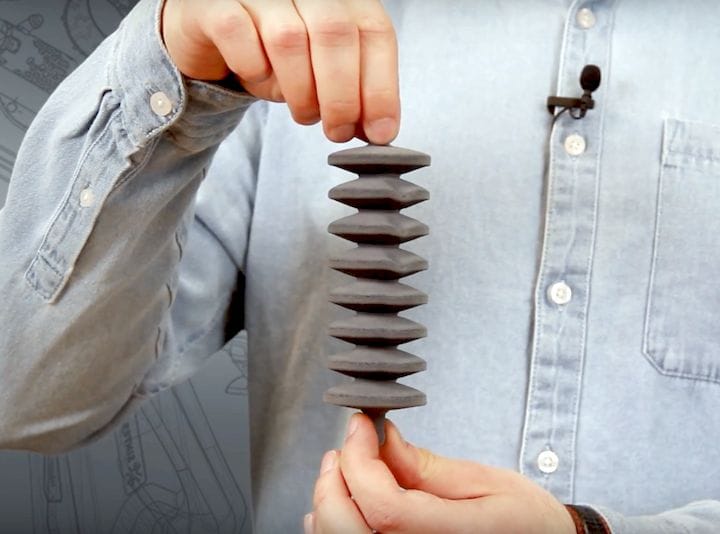![Scene from a video explaining a 3D printing technical concept [Source: Sinterit]](https://fabbaloo.com/wp-content/uploads/2020/05/image-asset_img_5eb095a89f11c.jpg)
Could video be a better medium for communications of tricky 3D print information?
I’ve been wondering this same question, as I’ve often been puzzled by poorly written documentation that accompanies 3D printers. That is, assuming you get any documentation at all. This problem is particularly evident in a deadly combination of a low budget and documentation provided in a language that’s unfamiliar to the manufacturer.
They say a picture is worth a thousand words, and that’s also true in the world of 3D printing. If I were to make a hierarchy of methods to explain how to operate a machine, I would rank them from worst to best as follows:
-
Poorly written text only
-
Well written text only
-
Diagrams with explanations
-
Images with explanations
-
Video with explanations
Well, sometimes the video can be not great either. Here was a case we saw some time ago where the important visuals in the video were catastrophically overwritten with text:
![A poorly produced 3D printer video where the text obscures the visuals [Source: Fabbaloo]](https://fabbaloo.com/wp-content/uploads/2020/05/image-asset_img_5eb095a903d8b.jpg)
That approach was most definitely not helpful.
Some vendors are moving more towards video explanations of machines and materials. One of them is Sinterit, who have attracted our attention recently with a couple of fun — but also very explanatory — videos made by one of their staff. One deals with 3D printing flexible materials, and the other with SLS surface finish.
Sinterit’s Michał Krzak explains Sinterit’s strategy:
“The video brings even more content. This is why companies are flirting with this form of communication. It is fast, precise and easy for the audience to understand. Even the most difficult issues, are becoming much easier to explain and therefore to learn.”
And:
“The next great thing which is happening right now is that companies start to use video for other reasons than a plain marketing. Sharing useful information, without self-promotion is appreciated by the clients. Because they want to find out if this or that product will become a good choice for their purposes. To judge it by themselves, without the need for sifting promotional content.”
Use of Videos In 3D Printing
I agree strongly with this approach, as it is often much easier to understand new concepts if you’re seeing it rather than trying to visualize it from some random words. In fact, when puzzling with a machine issue, I often resort to YouTube to find someone that’s doing something similar.
And sometimes it is not even similar: I just want to find out what the setup is supposed to look like. For this I try to find any video of the machine and hope to see how something is plugged in or attached. The reason for this is that the original manufacturer neglected to provide sufficient instructions, images or especially a video to explain things.
Effects of 3D Printer Videos
The problem is that all too often the writers make assumptions about the knowledge of the reader. This is particularly problematic when, say, following a sequence of instructions, as a mistake at step 5 might not be realized until step 37. Or worse, step 97. This can be extremely frustrating.
For companies, this is also bad. They may think they’ve saved some money by skimping on user documentation and videos, but in fact by frustrating a segment of clients, their likelihood to buy new equipment is decreased. Even worse, they may swamp the company’s support service with calls that could have been avoided had proper explanations been provided.
The moral of the story here is that 3D printer manufacturers should consider spending a lot more on user documentation, and in particular consider the use of video for explanations of technical concepts. That investment will surely pay off in the long run.











Formlabs just issued three new videos for beginners to 3D printing, and the result was quite surprising.